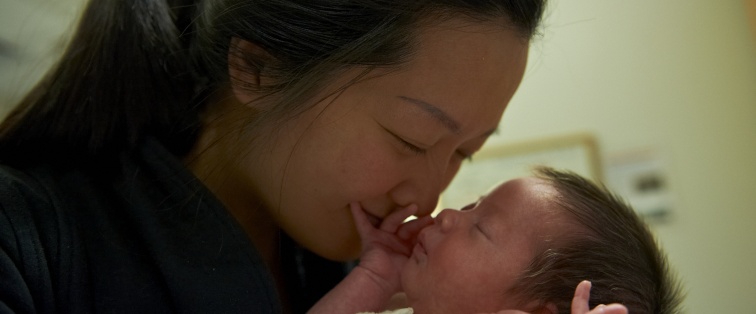MIECHV: A Model for Evidence-Based Policymaking

It’s that time again! MIECHV funding expires at the end of September and the program is up for reauthorization. Aren’t familiar with that acronym? Here’s a quick recap:
The federal Maternal, Infant, and Early Childhood Home Visiting (MIECHV) program began in 2010 with a significant investment ($1.5 billion over five years) in home visiting, or voluntary, free services provided in the home to pregnant moms and families of young children focused on parenting skills, child growth and development, and supporting families in defining and reaching personal goals. This investment allowed states, territories and tribes across the United States to expand the reach of evidence-based programming – programming that has demonstrated its ability to improve maternal and child health outcomes.
Following the MIECHV investment, the number of families served by home visiting between 2012 and 2016 quadrupled from 34,200 to 160,400.
In addition to this expansion, the MIECHV legislation facilitated important learning opportunities to advance the field of home visiting through its focus on evaluation and quality improvement. As researchers, we were happy to see that the law set aside three percent of MIECHV funding for research and evaluation. This targeted investment assisted with important relationship building between home visiting leadership, state governments, and research groups who have been working together to evaluate, adapt and advance how home visiting is implemented and delivered to families.
Such a strategic focus on evaluation and quality improvement will inform policy and program decisions regarding MIECHV and home visiting services moving forward, and can serve as a model for evidence-based policymaking in other areas as well.
Evaluating Pennsylvania’s home visiting programs
As evaluators of Pennsylvania’s MIECHV program, we have collaborated with state partners and local home visiting implementing agencies (LIAs) to measure the impact of MIECHV programs on Pennsylvania families, understand the strengths and challenges of implementation, and paint a picture of how the community context in which these programs occur impacts their success.
Our team employed a mixed-methods evaluation – using large administrative datasets and interviews with home visiting staff and clients – to learn how home visiting services impact health behaviors and everyday life. Through this we’ve been able to describe both the big picture and the nuances of home visiting effectiveness. Most recently, our evaluation highlighted the ways home visiting can positively influence smoking cessation within families and we’re currently exploring the relationship between home visiting and childhood injury and abuse prevention.
What is happening in other states?
Given that home visiting programs have become a central component of many local public health systems, the ability to generate evidence on their impact and identify opportunities for improvement within the programs will only help us make more informed choices about program services and, ultimately, serve more families in more targeted ways.
Beyond traditional evaluation efforts, we wanted to highlight a few examples of states that are using MIECHV funding in ways that effectively evaluate progress and inform future home visiting initiatives.
Michigan
The Michigan Public Health Institute helped 10 LIAs in establish a learning collaborative to aid agencies in implementing quality improvement efforts. The collaborative trained staff on how to use Plan-Do-Study-Act (PDSA) cycles, a quality improvement method that allows individual sites to address problems in real-time by iteratively adapting their systems and behaviors in response to information feedback and share lessons learned across all 10 agencies to improve outcomes.
Sites who under took this initiative successfully improved relationships between home visitors and families and increased not only the number of sessions families attended, but how long they stayed in the program. Participants in the learning collaborative acquired skills that will continue to help LIAs and the families they serve implement additional quality improvement initiatives.
Iowa and Virginia
These two teams have joined forces to develop an online portal compiling free training and professional development resources for home visitors. The teams created the first courses, using MIECHV funding, in Virginia. This work addresses a significant need acknowledged by LIAs across the country – accessible and affordable training opportunities for staff on topics relevant to their local populations. Individual LIAs have traditionally had to put a great deal of time, effort and money into identifying local training resources or paying for programming to come to them. By making content free and available online, this work alleviates many of the previous burdens.
The future of MIECHV
The expansion of home visiting programs provided by the 2010 MIECHV law has made services available in new communities and to more families than ever before. States and agencies administering home visiting programming continue to learn from evaluations of their programs to improve the services themselves, as well as the way they are delivered. The thoughtful design of MIECHV funding has contributed a great deal to the field of home visiting and, with MIECHV up for reauthorization in Congress this month, we hope to see support of the program continue.

